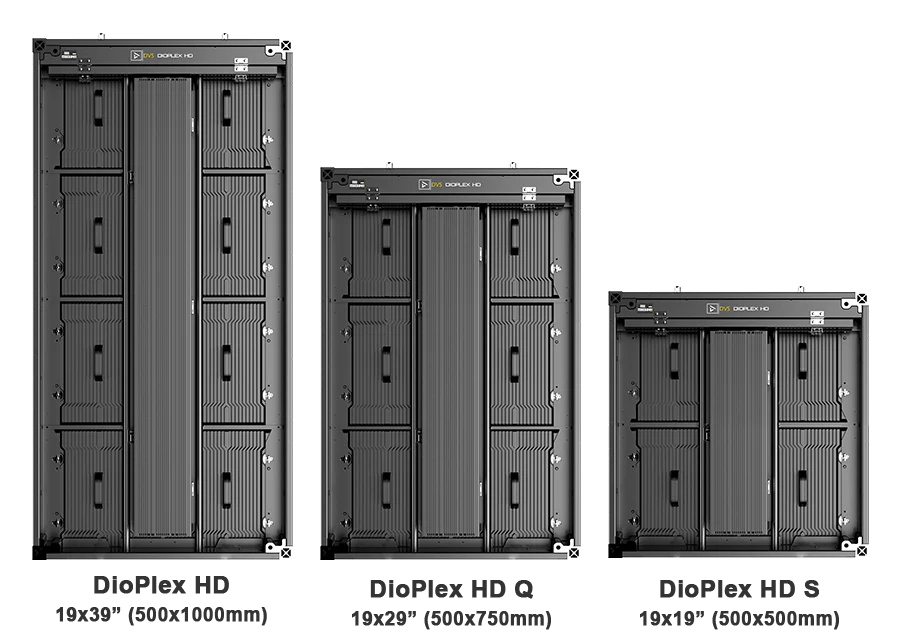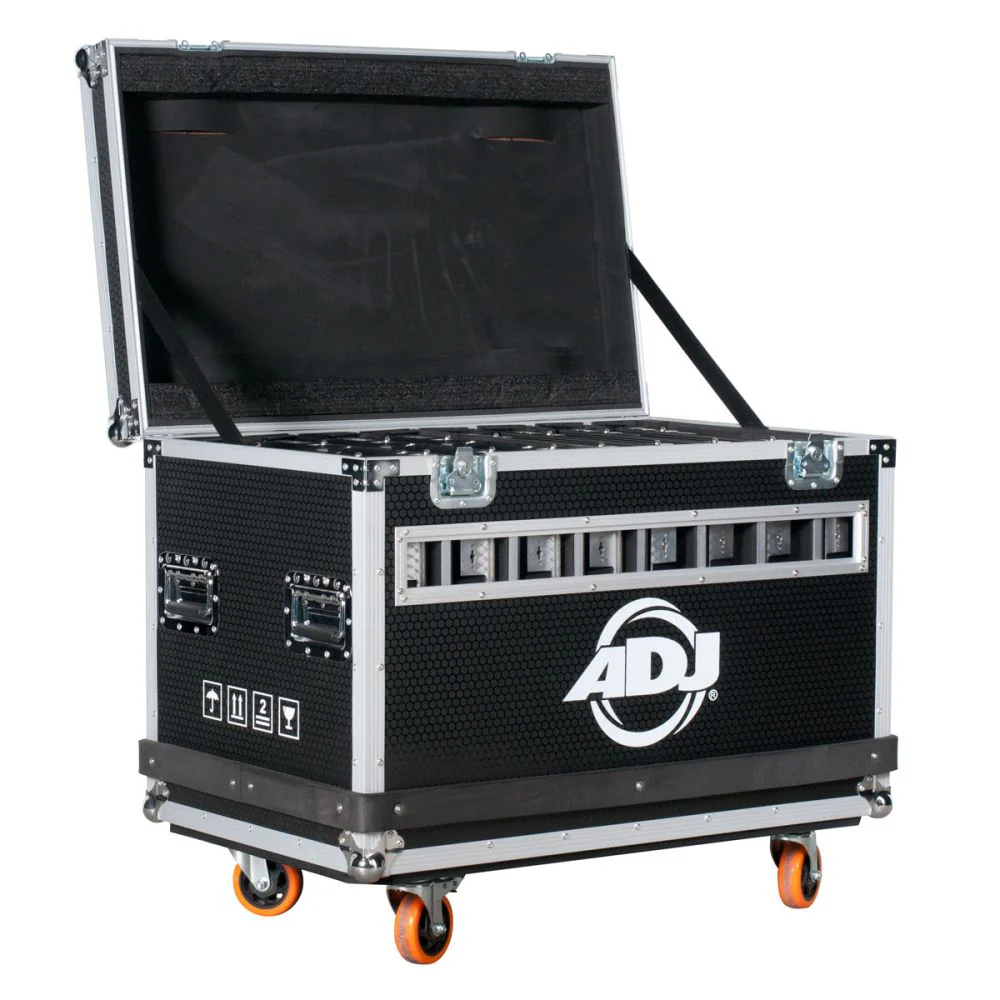
How Do You Choose an LED Video Wall?
Apr 03, 2025Video walls have become an essential and versatile element of stage design and lighting in recent years. Whether for concerts, corporate events, houses of worship, or broadcast productions, LED walls are transforming how we present visual content.

As someone who has closely followed the evolution of LED walls for the last decade, I’ve spent countless hours researching, asking industry experts, and observing these walls in action. One of the most common frustrations I see in the industry is the lack of clear, unbiased guidance when choosing an LED wall. Too often, buyers turn to online forums only to be bombarded with generic sales pitches rather than real advice. Today, I want to change that by giving you a transparent, brand-agnostic look at how to choose the right LED wall– even if we’re not the ones to sell it to you. Our primary goal at Above AVL is to be known for honesty, transparency, and knowledge to help you make the choice that best meets your needs.
Understanding the Components of an LED Wall
Before diving into brands and specifications, it's crucial to understand what goes into building an LED wall. Here’s a breakdown of the key components:
-
LED Wall Panels
The most visible part of your setup, LED panels come in different sizes, but a common format is 500mm x 500mm (about 20 inches square). Some manufacturers offer double-size panels (1000mm x 500mm) for cost efficiency.
Examples of wall panels:


-
Mounting and Support Structures
You’ll need a system to mount or hang your LED wall, which can include:
- Hanging bars attached to trusses (with ground support bases removed)
- Ground support systems using bars with bases
- Direct-wall-mount LED panels
- Proprietary or universal support systems customized to your wall size

-
Cabling
LED walls require two main types of cabling:
- Data jumpers for signal transmission
- Power jumpers to distribute electricity
You’ll need cables not only between panels, but also main power cables and main processor cables. We recommend 12-gauge cables for durability and reliability, and to support higher amperage, up to 20 amps in many situations, but will supply proper cables with any LED wall we sell!
-
Storage and Protection
If your LED wall is portable or for semi-permanent installation, which are different types of panels than ones designed for permanent install, investing in road cases for storage and transport is essential. Even if you only move or rearrange the wall once or twice a year, it’s worth it to invest in road cases to protect your panels.
Proper storage protects panels from accidental damage, ultimately saving you money on repairs or replacements. Especially if you keep extra panels on hand for flexibility when re-arranging, you’ll definitely want to store those in a road case.

-
LED Wall Processor
A processor is necessary to control the LED wall. I highly recommend opting for a processor that uses the latest software for easier setup and configuration. For example, Novastar’s newer processors using the COEX VMP (Vision Management Platform) control software are a big step up from older models. It is much easier to use, has more options, and is overall miles ahead of the older Nova LCT software. In this video I compared two Novastar processors running LCT and VMP. I recommend anyone buying a new system to avoid processors running older software – even if you save money up front, it’s not usually worth it.
For a helpful resource specifically on choosing the right sized LED wall processor, check out this video.
-
Spare Parts
Finally, every LED wall setup should include spare parts, such as:
- Extra LED modules
- Power supplies
- Receiving cards
- Masking components
- Latches and handles
Having these on hand ensures quick repairs, minimizing downtime. In my opinion, if you’re buying an LED wall from a reputable vendor, they should be supplying spare sparts in certain percentages. What percent is a matter of debate and will differ by supplier. And if you’re using an LED wall for live production and constantly setting up and tearing down, you’ll definitely want even more spare parts on hand.
One reason we like DVS for their LED walls is that in addition to a five year warranty, they send you a significant quantity of spare parts with each wall package. You get every piece—cables, modules, power supplies, receiving cards, individual LED masking, corner protectors, spare latches and handles, everything. This level of service and support is one of the things that makes a difference when choosing an LED wall brand. But, here at Above AVL we do carry multiple brands of LED wall to find the best fit for you for every project!
What to Look for When Buying an LED Panel
Not all LED panels are created equal. Here are some key factors to consider:
-
Corner and Edge Protection (For portable walls)
Quality LED panels feature corner protectors and edge protection mechanisms to prevent LED damage when setting up, tearing down, or transporting the panels. The LEDs along an edge are most likely to get damaged, so it’s important to protect those areas, but not every wall on the market has that protection.

-
Easy Module Replacement
Look for panels where power and data units can be quickly swapped out without replacing an entire panel. This feature is crucial for fast troubleshooting during live events. For example, some models have ribbon cable-less modules that increase reliability in portable setups.
-
Handle and Latch Quality
Durable, well-designed handles and latches make it easier to transport and assemble panels securely, and don’t forget about spare handles and latches.
-
Mask Ratio
The mask ratio refers to the balance between LED size and pixel pitch. You want as small of a difference between those as possible. Some companies will put tiny LEDs on a 2.9 millimeter wall, which doesn’t look good. A higher-quality panel will have a more optimized mask ratio, leading to a better on-camera appearance.
-
Refresh Rate
For professional applications, aim for a minimum refresh rate of 3840Hz. Newer walls coming out now have higher refresh rates, making it easier to get them looking great on camera. Higher refresh rates improve performance on camera, reducing flicker and artifacts. We discuss this in detail, here!
-
Scan Rate
The scan rate determines how quickly LEDs refresh, which is a careful balance between brightness and the ability to have the LEDs individually refreshing faster so that there’s less potential for artifacts on camera. Higher scan rates of the tiles help minimize the moiré effect and improve overall display quality.
-
Firmware Consistency
Even with top-tier specifications, an LED wall’s performance can be affected by inconsistencies in firmware. Reliable vendors ensure firmware updates are correctly applied across batches to maintain quality control.
-
Pixel Pitch and Other Factors
Deciding on what pixel pitch you need, based on the viewing distance and camera viewing distance, is also a very important component of choosing that right LED wall for your specific needs. For more about pixel pitch and why it matters, read this article.
Final Thoughts: Choosing the Right Supplier
Buying an LED wall is a significant investment, and choosing the right supplier is just as important as choosing the right product. When evaluating vendors, consider:
- Are they recommending the best option for your needs, or just pushing a single brand?
- Do they offer a range of brands and unbiased advice?
- Are they providing a reasonable amount of spare parts?
- What is their warranty and support policy?
At AboveAVL.com, we prioritize transparency and customer-focused recommendations. We are very choosy about the brands we carry, making sure they meet our standards for quality, customer support, and price for value. We look at multiple brands to find the best fit for you, even if it happens to be one we don’t carry.
If you’re considering an LED wall purchase, check out our LED Wall Calculator at AboveAVL.com. This tool helps you estimate the right size, pixel pitch, and budget for your project. And then we will reach out with more personalized information to help you make the best decision, whether you get your wall from us or somewhere else!
Let’s make sure you get the right LED wall—without the sales gimmicks.
HOW TO BEGIN WITH LIGHTING
Getting started with lighting is difficult. What tools do you need?
How do you know if what you're buying or using is the right solution?
Let me send you a FREE guide to help you begin with lighting:


